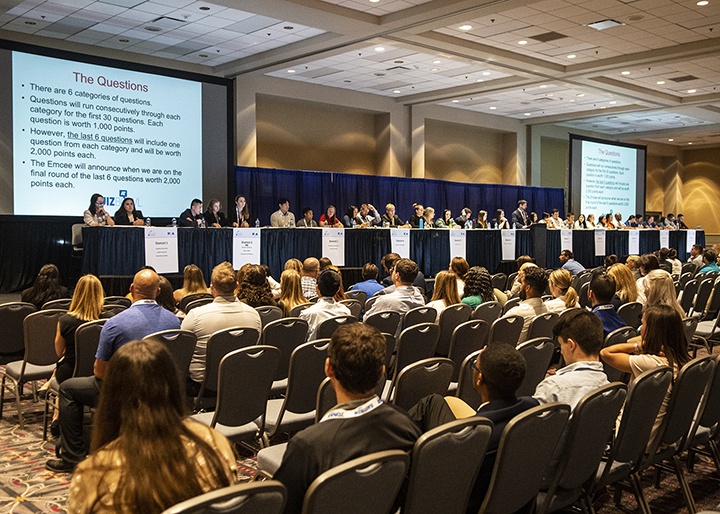NATA EducATe Courses Released in November
As your source of lifelong learning, NATA EducATe provides users with an extensive educational library, a customizable experience, the ability to interact with peers and more.
New courses are constantly being added to the platform to ensure you have the knowledge needed to stay up to date in your practice – as well as earn CEUs.
Latest Research Highlighted at NATA 2023
Thanks to the NATA Research & Education Foundation Free Communications Program, attendees of the in-person 74th NATA Clinical Symposia & AT Expo will have the opportunity to learn about the latest research in athletic training June 22-24 at the Indiana Convention Center (ICC) i
Don’t Miss the NATA Career Fair
During the 74th NATA Clinical Symposia & AT Expo, attendees will have opportunities to equip themselves and connect with prospective employers through the NATA Career Fair in the Indiana Convention Center, Room 244.
The AT Expo: A Can’t-Miss Event
Taking place June 22-24 at the Indiana Convention Center, Hall I, during the 74th NATA Clinical Symposia & AT Expo in Indianapolis, the AT Expo is the world’s largest showcase of products and services for the athletic training profession.
NATA 2023: Foundation Events to Look Forward to
The 74th NATA Clinical Symposia & AT Expo features a host of opportunities to learn more about the NATA Research & Education Foundation and its efforts to advance sports medicine research and athletic training education.
Students: What To Know About NATA 2023
The 74th NATA Clinical Symposia & AT Expo, taking place June 21-24 in Indianapolis, is just days away, and with it, the annual Athletic Training Student Seminar and a host of opportunities for student attendees to network and celebrate the profession.
Meaningful Change Inspired
To commemorate Pride Month, throughout June the NATA Now blog is highlighting members of the NATA LGBTQ+ Advisory Committee and their impact on the profession.
With an uncle who practiced sports medicine, Meredith Decker, PhD, LAT, ATC, said she fell in love with athletic training at a very young age.
Get Ready: NATA 2023 On-Site Reminders
The 74th NATA Clinical Symposia & AT Expo in Indianapolis is right around the corner! We want to ensure attendees are well-equipped to enjoy their convention experience, taking place June 21-24 at the Indiana Convention Center (ICC) in Indianapolis. Read on for everything you need to know about being on-site at NATA 2023.
2023 Quiz Bowl Teams
The 11 teams that will compete at the 2023 NATA Quiz Bowl, sponsored by Henry Schein in Indianapolis have been determined. Scheduled for 4:30 p.m. on June 23 at the 74th NATA Clinical Symposia & AT Expo, the quiz bowl features teams from each district in a Jeopardy-style competition. More than bragging rights will be on the line as the top three teams will receive prize packages from Henry Schein.
For the People and the Profession
To commemorate Pride Month throughout June, the NATA Now blog is highlighting members of the NATA LGBTQ+ Advisory Committee and their impact on the profession.
NATA LGBTQ+ Advisory Committee Chair Jen Sturtevant, MBA, LAT, ATC, found her love for athletic training in the intersection of sports and health care – people.
NATA Hall of Fame Class of 2023: Future
The NATA Hall of Fame is the pinnacle of recognition for members, honoring a select group of athletic trainers who have shaped the athletic training profession and exemplified what it means to live a life of service.











